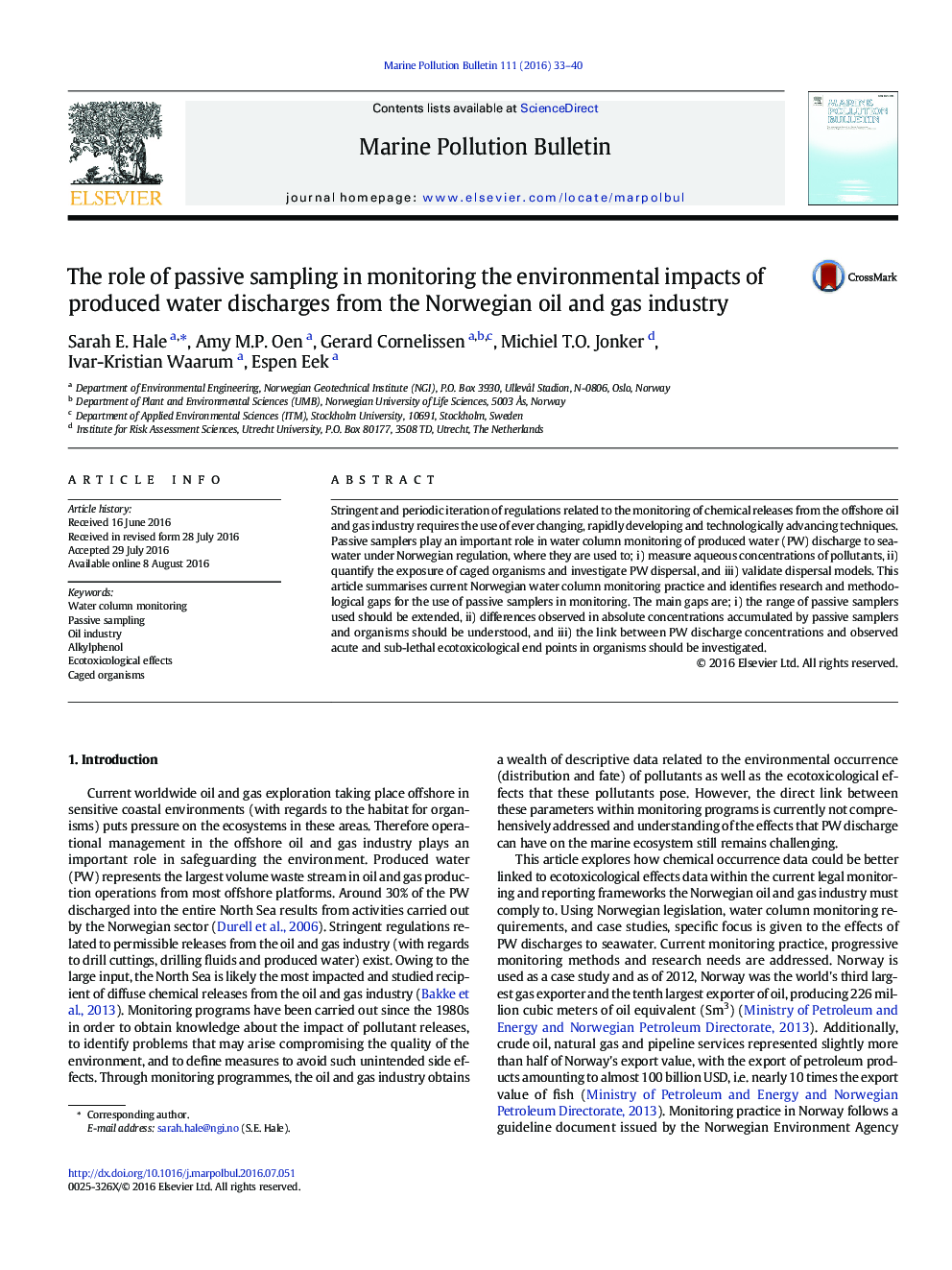| Article ID | Journal | Published Year | Pages | File Type |
|---|---|---|---|---|
| 4476289 | Marine Pollution Bulletin | 2016 | 8 Pages |
•Passive sampling is required in water column monitoring for the oil and gas industry.•Passive samplers are used to quantify concentrations of pollutants in the water column.•Passive samplers are used to validate the uptake to caged mussels.•Passive samplers are used to quantify pollutant/discharge dispersal.•Links between passive sampler concentrations and observed ecotoxicological effects are lacking.
Stringent and periodic iteration of regulations related to the monitoring of chemical releases from the offshore oil and gas industry requires the use of ever changing, rapidly developing and technologically advancing techniques. Passive samplers play an important role in water column monitoring of produced water (PW) discharge to seawater under Norwegian regulation, where they are used to; i) measure aqueous concentrations of pollutants, ii) quantify the exposure of caged organisms and investigate PW dispersal, and iii) validate dispersal models. This article summarises current Norwegian water column monitoring practice and identifies research and methodological gaps for the use of passive samplers in monitoring. The main gaps are; i) the range of passive samplers used should be extended, ii) differences observed in absolute concentrations accumulated by passive samplers and organisms should be understood, and iii) the link between PW discharge concentrations and observed acute and sub-lethal ecotoxicological end points in organisms should be investigated.
Graphical abstractFigure optionsDownload full-size imageDownload as PowerPoint slide
